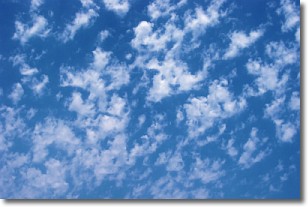Weather Alert in Washington
Special Weather Statement issued July 30 at 8:42AM PDT by NWS Seattle WA
AREAS AFFECTED: San Juan County; Lowlands of Western Whatcom County; Lowlands of Western Skagit and Northwestern Snohomish Counties; Port Townsend Area; Eastern Strait of Juan de Fuca; Western Strait of Juan de Fuca; Northern Washington Coast; Grays Harbor County Coast; Island County
DESCRIPTION: ...TSUNAMI ADVISORY IS IN EFFECT FOR THE WASHINGTON COAST AND STRAIT OF JUAN DE FUCA... * UPDATES...Tsunami waves continue to arrive along the Washington coast and the Strait of Juan de Fuca. * LOCAL IMPACTS...A tsunami capable of producing strong currents that may be hazardous to swimmers, boats, and coastal structures is expected. Widespread inundation is NOT expected. * RECOMMENDED ACTIONS...If you are located in this coastal area, move off the beach and out of harbors and marinas. Do not go to the coast to watch the tsunami. Be alert to instructions from your local emergency officials. Tsunamis often arrive as a series of waves or surges which could be dangerous for many hours after the first wave arrival. The first tsunami wave or surge may not be the highest in the series. * OBSERVED TSUNAMI WAVE HEIGHTS FROM EARLIER... La Push 1.3 ft Neah Bay 0.4 ft Westport 0.5 ft Toke Point 0.4 ft Port Angeles 1.2 ft * PRELIMINARY EARTHQUAKE INFORMATION... An earthquake occurred on Jul 29 2025, with a preliminary magnitude of 8.8 centered 315 miles SW of Bering Island, Komandorski. * TIDE INFORMATION... Neah Bay...Low tide of 1.3 ft at 958 AM PDT on Jul 30. High tide of 6.9 ft at 438 PM PDT on Jul 30. La Push...Low tide of 0.9 ft at 943 AM PDT on Jul 30. High tide of 7.4 ft at 415 PM PDT on Jul 30. Westport...Low tide of 1.2 ft at 956 AM PDT on Jul 30. High tide of 8.0 ft at 435 PM PDT on Jul 30. Port Angeles...Low tide of 2.2 ft at 1153 AM PDT on Jul 30. High tide of 6.4 ft at 651 PM PDT on Jul 30. Port Townsend...Low tide of 2.8 ft at 118 PM PDT on Jul 30. High tide of 8.2 ft at 811 PM PDT on Jul 30. Friday Harbor...Low tide of 2.7 ft at 147 PM PDT on Jul 30. High tide of 7.4 ft at 853 PM PDT on Jul 30. Seattle...Low tide of 3.4 ft at 214 PM PDT on Jul 30. High tide of 11.1 ft at 849 PM PDT on Jul 30. Tacoma...Low tide of 3.4 ft at 215 PM PDT on Jul 30. High tide of 11.5 ft at 852 PM PDT on Jul 30. This product will be updated as new information becomes available. Stay tuned to your local news source and NOAA weather radio for further information and updates. This product will be updated as new information becomes available. Stay tuned to your local news source and NOAA weather radio for further information and updates.
INSTRUCTION: N/A
Want more detail? Get the Complete 7 Day and Night Detailed Forecast!
Current U.S. National Radar--Current
The Current National Weather Radar is shown below with a UTC Time (subtract 5 hours from UTC to get Eastern Time).

National Weather Forecast--Current
The Current National Weather Forecast and National Weather Map are shown below.

National Weather Forecast for Tomorrow
Tomorrow National Weather Forecast and Tomorrow National Weather Map are show below.

North America Water Vapor (Moisture)
This map shows recent moisture content over North America. Bright and colored areas show high moisture (ie, clouds); brown indicates very little moisture present; black indicates no moisture.

Weather Topic: What is Evaporation?
Home - Education - Precipitation - Evaporation
 Next Topic: Fog
Next Topic: Fog
Evaporation is the process which returns water from the earth
back to the atmosphere, and is another crucial process in the water cycle.
Evaporation is the transformation of liquid into gas, and it happens because
molecules are excited by the application of energy and turn into vapor.
In order for water to evaporate it has to be on the surface of a body of water.
Next Topic: Fog
Weather Topic: What are Fractus Clouds?
Home - Education - Cloud Types - Fractus Clouds
 Next Topic: Freezing Rain
Next Topic: Freezing Rain
A fractus cloud (scud) is a fragmented, tattered cloud which has
likely been sheared off of another cloud. They are accessory clouds, meaning they
develop from parent clouds, and are named in a way which describes the original
cloud which contained them.
Fractus clouds which have originated from cumulus clouds are referred to as
cumulus fractus, while fractus clouds which have originated from stratus clouds
are referred to as stratus fractus. Under certain conditions a fractus cloud might
merge with another cloud, or develop into a cumulus cloud, but usually a
fractus cloud seen by itself will dissipate rapidly.
They are often observed on the leading and trailing edges of storm clouds,
and are a display of wind activity.
Next Topic: Freezing Rain
Current conditions powered by WeatherAPI.com




